News
Deptherapy’s Red Sea Wrecks – Part 5
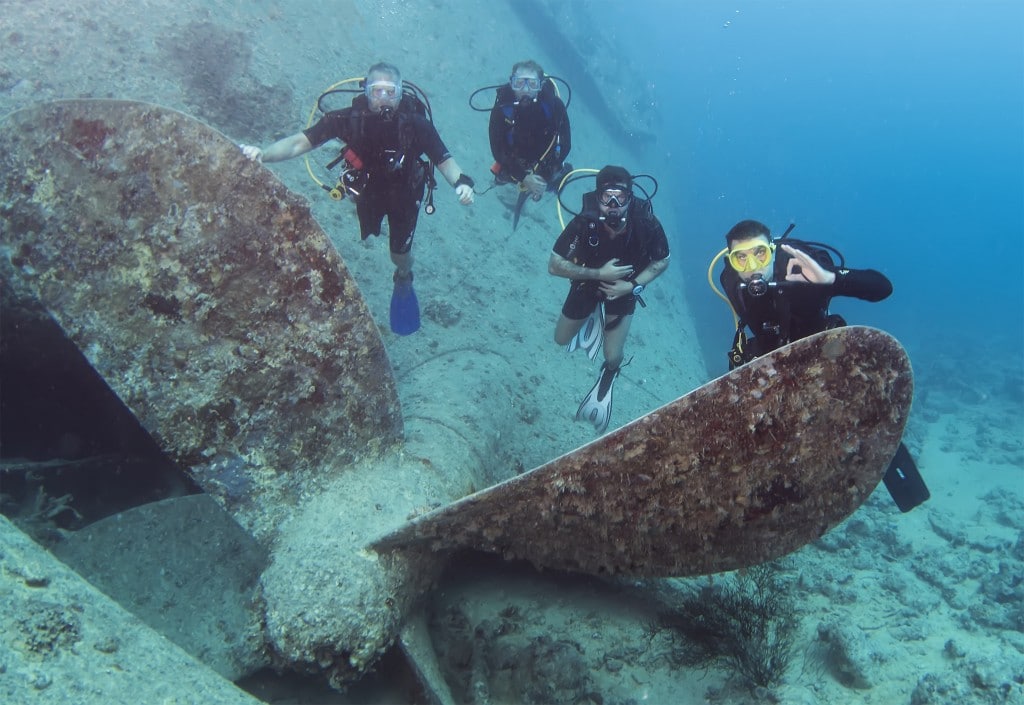
Part five of Gary Green’s account of the Deptherapy Red Sea Military and Forgotten Wrecks liveaboard expedition.
Days 7 & 8: SS Thistlegorm (Four Dives)
And so it was on to the Thistlegorm, a shipwreck that had been built up so skilfully in the medium of presentation by Dan Phillips, another of the programme members who suffers with PTSD. Regarding his injuries though, he refuses to be defined by them. He does, however, not mind being defined as a self-proclaimed geek. I am not but I did have a sense of real enthusiasm injected into me by his presentation; I think we all did as he amazingly built this picture up in our minds. He produced videos of the original launch, from the early forties, showing the ship being pulled from harbour; it was fascinating that this original footage was available, especially as the ship in front of our eyes was now beneath us.
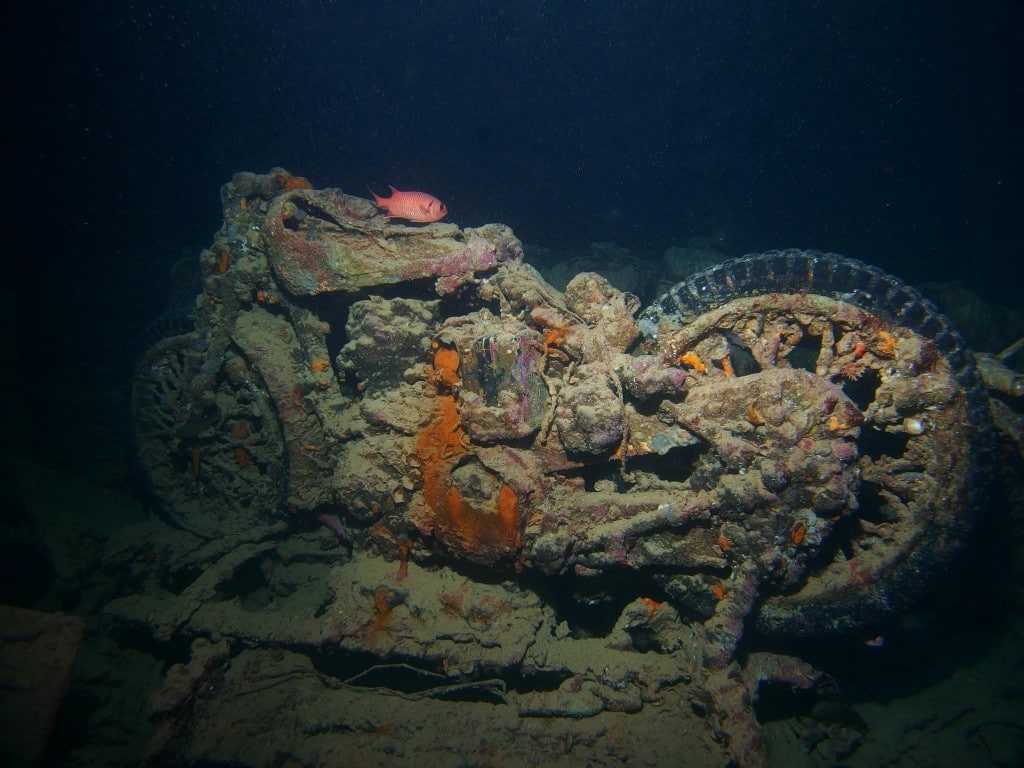
The Thistlegorm is a war grave and to us veterans it hit a nerve. We all share that bond of war that stretches back to the first soldiers that fought for freedom. It would be the same as someone in fifty years returning to Afghanistan to places where I had lost friends in war; it puts a lump in my throat. The story was told of the sinking and I could see it in my head. I took a step outside and could picture myself standing on board as the bombers flew over, the chaos, death and fear that then ensued.
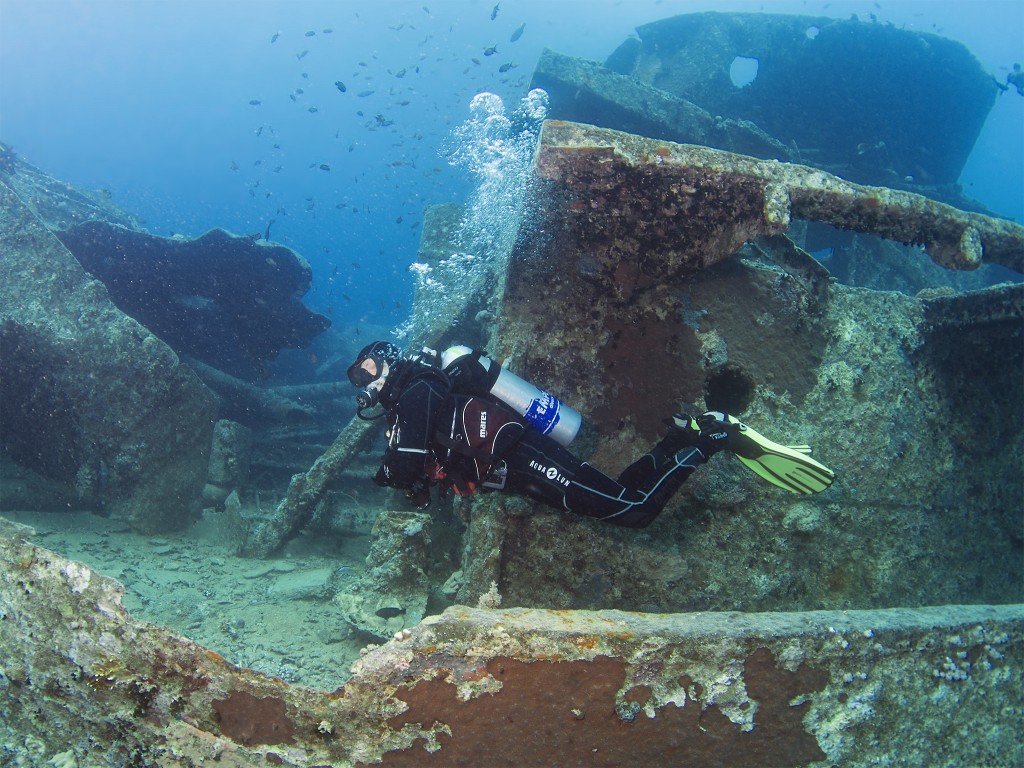
The wreck did not disappoint. The current was strong and we held tight to the shot line to avoid being lost in the water. The dive was incredible; the wreck itself had so many mysteries. The guns were still intact on the ship and it was incredible to think that at some point in time these would have had to be used to defend themselves. How unfortunate that they were not used when they were needed most; now they lay inert, a living submerged museum piece.
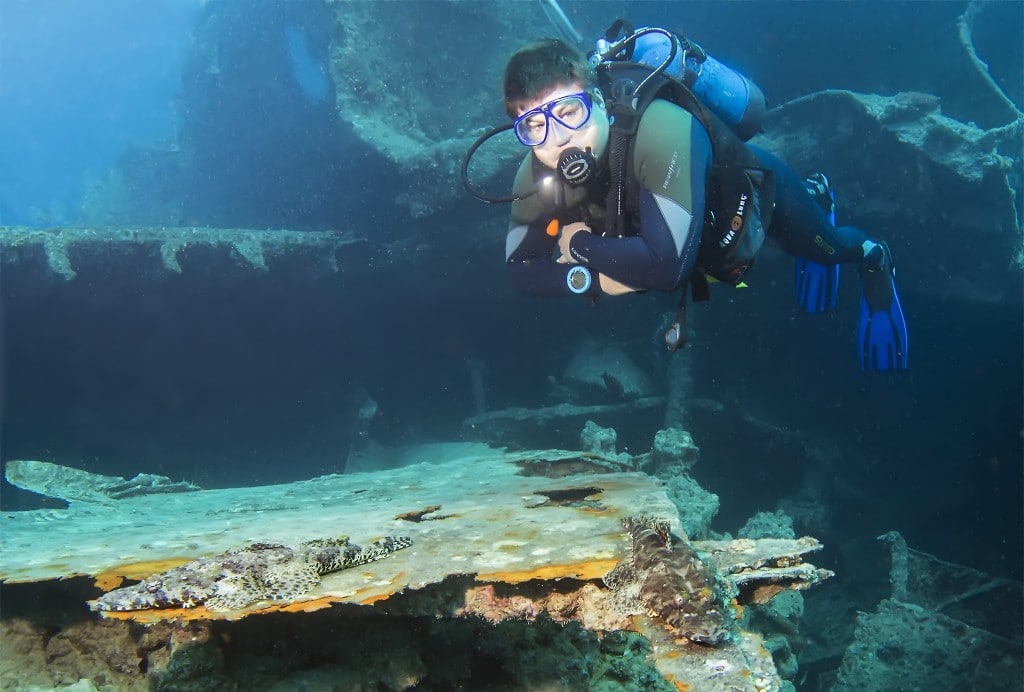
There were parts of the wreck we could penetrate. The WWII cargo still on board – motorcycles, trucks etc. – all still in the same place as when the ship sank. At the bottom of the shot line stood a big shell of ammunition, which I would guess was for the anti-aircraft weapons on board. However inert it may be, wet or damaged, it’s still not something you would want to be tampering with. The lads obviously made jokes about striking the percussion cap underwater, which certainly was a no-no. In total we completed four dives on the Thistlegorm, which you could say was still not enough to uncover all of its mysteries. We carried out two on day seven and another two on day eight before moving on to Abu Nuhas. To finish off the Thistlegorm, the most apt way to sum it up would not be my words, but the words of the newfound historian and enthusiast, Dan Philips, who says…
“The S.S. Thistlegorm is almost as it was before it was sunk (apart from the blast damage) which makes it easy to put yourself in the shoes of the men that were aboard. No museum or battlefield tour on land could bring you closer to the history of the era.”
A note from Richard Cullen, Founder & Chairman Deptherapy & Deptherapy Education:
ACT OF REMEMBRANCE
So two days on the famous SS Thistlegorm wreck. This amazing wreck never fails to impress. All those who had never dived it before were moved by the BSA motorbikes, the trucks, rifles, engines, munitions etc in lines as they were when the ship was sunk whilst at anchor by a German bomber in World War II. For most of the time we have been the only boat moored on the site and those that wanted were able to penetrate the decks of the ship.
Before we departed SS Thistlegorm we held a very poignant and emotional Service of Remembrance on the top deck of the Princess Diana. The programme members and the dive team formed a hollow square. The hollow square was lined by the ‘troops’ on three sides with the fourth side empty to represent those departed brothers in arms. Dickie Henderson called the square to attention.
We named and remembered the four crew members who died that night: Alfred Keen, aged 68, Joseph Munro Rolfe aged 17, Karl Sankando aged 49, Alexander Watt aged 21 and the five members of the Royal Navy gun crew, Arthur Cain aged 26, Archibald Gethin 19, Donald Masterson aged 32, Christopher Todds aged 25 and Thomas Woolaghan aged 24. We also remembered the friends and brothers in arms of our programme members who did not return home from recent conflicts. The majority of our programme members had lost friends and comrades in Iraq, Afghanistan, Northern Ireland and other conflicts.
Gary Green delivered Binyon’s Poem for the Fallen:
“They shall grow not old as we that are left grow old, age shall not weary them nor the years condemn. At the going down of the sun and in the morning we will remember them.”
The Last Post echoed eerily across the empty Red Sea. As the notes faded away on the wind, Chris Middleton repeated those famous lines inscribed at Kohemi:
“When you go home tell them of us and say for your tomorrow we gave our today.”
The ceremony ended with the Gaelic Blessing:
“May the road rise to meet you.
May the wind always be at your back
May the sun shine on your face and the
Rains fall soft upon your fields and until
We meet again may your God hold you safe in the palm of his hand.”
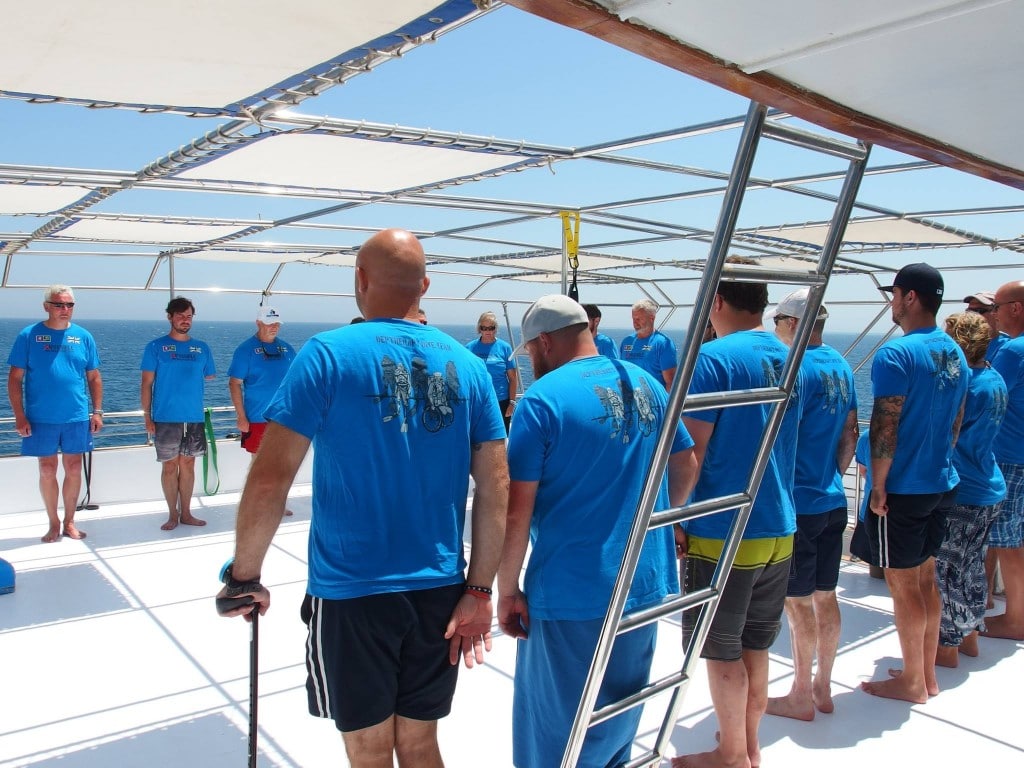
Day 8: Abu Nuhas – SS Markus
After five dives on the Thistlegorm, we headed to the reef of Abu Nuhas. There are quite a few wrecks on this reef and many different stories. Some say that the reef had taken ships over the years, that the reef was notorious for sinking boats when the captain was caught off guard. The story that we were told was slightly different, in fact three of the wrecks had belonged to one man who had sunk them to claim back money from his insurance. I certainly am not informed enough to make a judgement either way but it was pointed out that we were out of the way of any commercial shipping lanes, which does induce some doubt into the nature of the ships sinking from any natural disaster.
Another story about this wreck that was strange was that one wreck was actually on top of another. The Markus has over the years been mixed up with the Chrisoula K. The maps that you pull for the Chrisoula K are in actual fact the Markus, which is also known as the tile wreck, named this because the cargo was tiles, which can still be seen on the wreck itself. The Chrisoula K was actually 55m below the Markus, so we were not actually diving it at all. Available information on both of these wrecks is misleading.
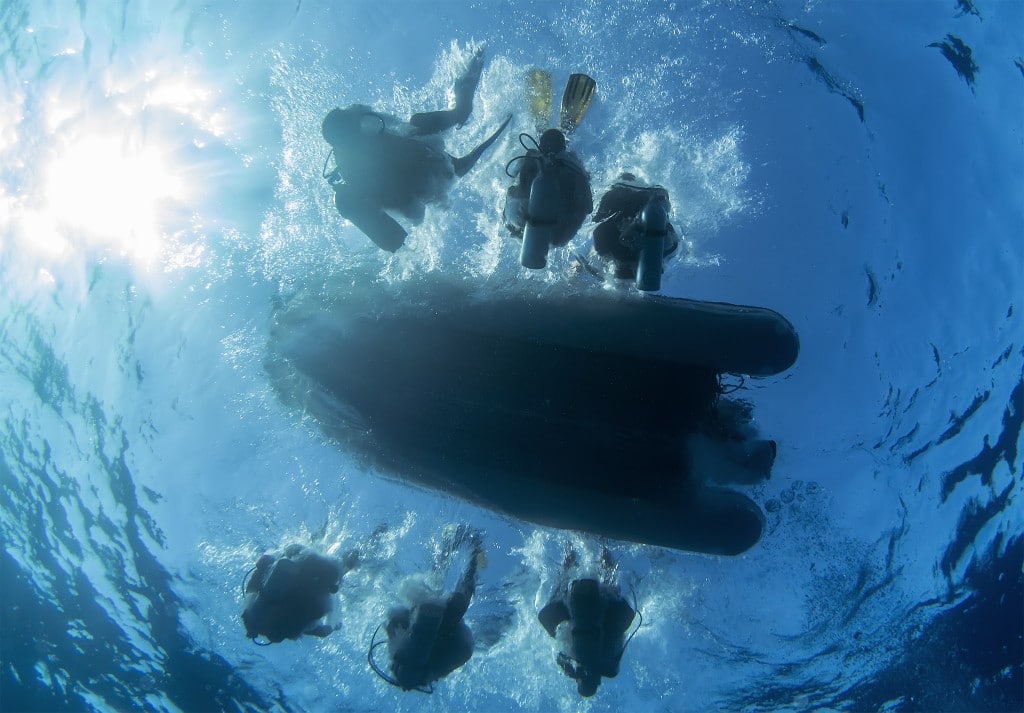
Inside the wreck of the SS Markus there is a tool room where the working areas are still visible. A pillar drill can still be seen, the drill itself still intact but the framework deteriorated over time by the salty seawater. The wreck, like all the wrecks, had been eaten away over time, the water eroding away the history, giving way to the marine life that has spawned an underwater circle of life; as the wreck dies, the sea life emerges. The wreck itself was easy to navigate. Holes in the wreck structure gave way to light which illuminated the passageways. A tool box still has tools in the open drawers; a reminder of the work – and life – that once used to take place on the ship.
Day 8: Abu Nuhas Reef (Night Dive)
The second dive at Abu Nuhas was a reef dive conducted as a night dive. The reef itself was actually in quite poor condition, which was a shame, although at night some of the colour seems to fade away until your torch beam lights up the way. The life on the reef given its condition was impressive. One of the Red Sea’s convicts gave me a fright; as I hovered a few inches off the sea floor I narrowly missed a scorpion fish. It could have left me with a nasty reminder of an absolutely once in a lifetime trip. Amongst the life that we saw was an absolutely stunning emperor angel fish My favourite fish has to be the clown fish (sorry, Red Sea anemone fish) but the sight of this emperor fish was close to taking the podium. We won’t include sharks in this as the competition becomes slightly one sided…
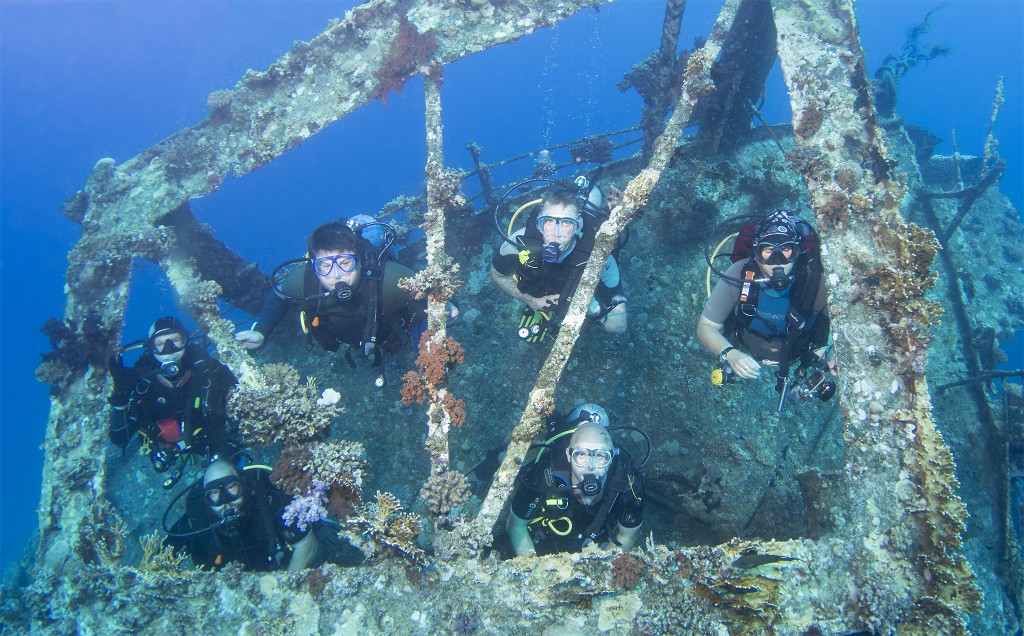
Read more next week: Gary’s blog concludes on Monday / Tuesday with Parts Six & Seven.
Donate to Deptherapy or find out more about their work at www.deptherapy.co.uk
Thanks to Dmitry Knyazev and Steve Rattle for the incredible photographs.
Blogs
Northern Red Sea Reefs and Wrecks Trip Report, Part 3: The Mighty Thistlegorm

Jake Davies boards Ghazala Explorer for an unforgettable Red Sea diving experience…
Overnight, the wind picked up, making the planned morning dive a bit bumpy on the Zodiacs to the drop point on Thomas Reef. There, we would dive along the reef before descending through the canyon and then passing under the arch before ascending the wall with a gentle drift. The site provided great encounters with more pelagic species, including shoals of large barracuda, tuna, and bigeye trevally.
Once back on the boat, it was time to get everything tied down again as we would head back south. This time, with the wind behind us, heading to Ras Mohammed to dive Jackfish Alley for another great gentle drift wall dive before then heading up the coast towards the Gulf of Suez to moor up at the wreck of the Thistlegorm. This being the highlight wreck dive of the trip and for many onboard, including myself, it was the first time diving this iconic wreck. I had heard so much about the wreck from friends, and globally, this is a must on any diver’s list. Fortunately for us, there was only one other boat at the site, which was a rarity. A great briefing was delivered by Ahmed, who provided a detailed background about the wreck’s history along with all the required safety information as the currents and visibility at the site can be variable.

Kitting up, there was a lot of excitement on deck before entering the water and heading down the shoreline. Descending to the wreck, there was a light northerly current which reduced the visibility, making it feel more like the conditions that can be found off the Welsh coast. At 10m from the bottom, the outline of the wreck appeared as we reached the area of the wreck which had been bombed, as our mooring line was attached to part of the propeller shaft. Arriving on deck, instantly everywhere you looked there were many of the supplies which the ship was carrying, including Bren Carrier tanks and projectiles that instantly stood out.

We headed around the exterior, taking a look at the large propeller and guns mounted on deck before entering the wreck on the port side to take a look in the holds. It was incredible to see all the trucks, Norton 16H, and BSA motorcycles still perfectly stacked within, providing a real snapshot in time.

Overall, we had four dives on the Thistlegorm, where for all of the dives we were the only group in the water, and at times, there were just three of us on the whole wreck, which made it even more special, especially knowing that most days the wreck has hundreds of divers. Along with the history of the wreck, there was plenty of marine life on the wreck and around, from big green turtles to batfish, along with shoals of mackerel being hunted by trevally. Some unforgettable dives.

The final leg of the trip saw us cross back over the Suez Canal to the Gobal Islands where we planned to stay the night and do three dives at the Dolphin House for the potential of sharing the dive with dolphins. The site, which included a channel that was teeming with reef fish, especially large numbers of goatfish that swam in large shoals along the edge of the reef. These were nice relaxing dives to end the week. Unfortunately, the dolphins didn’t show up, which was okay as like all marine life they are difficult to predict and you can’t guarantee what’s going to be seen. With the last dive complete, we headed back to port for the final night where it was time to clean all the kit and pack before the departure flight the next day.

The whole week from start to finish on Ghazala Explorer was amazing; the boat had all the facilities you need for a comfortable week aboard. The crew were always there to help throughout the day and the chefs providing top quality food which was required after every dive. The itinerary providing some of the best diving with a nice mixture of wreck and reef dives. I would recommend the trip to anyone, whether it’s your first Red Sea liveaboard in the Red Sea or you’re revisiting. Hopefully, it’s not too long before I head back to explore more of the Red Sea onboard Ghazala Explorer.

To find out more about the Northern Red Sea reef and wrecks itineraries aboard Ghazala Explorer, or to book, contact Scuba Travel now:
Email: dive@scubatravel.com
Tel: +44 (0)1483 411590
Photos: Jake Davies / Avalon.Red
Blogs
Northern Red Sea Reefs and Wrecks Trip Report, Part 2: Wall to Wall Wrecks

Jake Davies boards Ghazala Explorer for an unforgettable Red Sea diving experience…
The second day’s diving was a day full of wreck diving at Abu Nuhas, which included the Chrisoula K, Carnatic, and Ghiannis D. The first dive of the day was onto the Chrisoula K, also known as the wreck of tiles. The 98m vessel remains largely intact where she was loaded with tiles which can be seen throughout the hold. The stern sits at 26m and the bow just below the surface. One of the highlights of the wreck is heading inside and seeing the workroom where the machinery used for cutting the tiles are perfectly intact. The bow provided some relaxing scenery as the bright sunlight highlighted the colours of the soft coral reef and the many reef fish.

Following breakfast, we then headed to the next wreck, which was the Carnatic. The Carnatic is an 89.9m sail steamer vessel that was built in Britain back in 1862. She ran aground on the reef back in 1869 and remains at 27m. At the time, she was carrying a range of items, including 40,000 sterling in gold. An impressive wreck where much of the superstructure remains, and the two large masts lay on the seafloor. The wooden ribs of the hull provide structures for lots of soft corals, and into the stern section, the light beams through, bouncing off the large shoals of glass fish that can be found using the structure as shelter from the larger predators that are found outside of the wreck.

The final wreck at Abu Nuhas was the Ghiannis D, originally called ‘Shoyo Maru,’ which was 99.5m long and built in Japan back in 1969 before becoming a Greek-registered cargo ship in 1980. The ship then ran aground on the reef on April 19th, 1983, and now sits at the bottom at a depth of 27m. Heading down the line, the stern of the ship remains in good condition compared to the rest of the hull. The highlight of the wreck, though, is heading into the stern section and down the flights of stairs to enter the engine room, which remains in good condition and is definitely worth exploring. After exploring the interior section of the ship, we then headed over to see the rest of the superstructure, where it’s particularly interesting to see the large table corals that have grown at the bow relatively quickly considering the date the ship sank. After surfacing and enjoying some afternoon snacks, we made sure everything was strapped down and secured as we would be heading north and crossing the Gulf of Suez, where the winds were still creating plenty of chop.

The next morning, it was a short hop to Ras Mohammed Nature Reserve for the next couple of days of diving. The 6am wake-up call came along with the briefing for the first site we would be diving, which was Shark & Yolanda. The low current conditions allowed us to start the dive at Anemone City, where we would drift along the steep, coral-filled wall. These dives involved drifts, as mooring in Ras Mohammed wasn’t allowed to protect the reefs. As a dive site, Shark & Yolanda is well-known and historically had a lot of sharks, but unfortunately not so many in recent years, especially not so early in the season. However, there was always a chance when looking out into the blue.

The gentle drift took us along the steep walls of the site, with plenty of anemone fish to be seen and a huge variety of corals. It wasn’t long into the dive before we were accompanied by a hawksbill turtle, who drifted with us between the two atolls before parting ways. Between the two reefs, the shallow patch with parts of coral heads surrounded by sand provided the chance to see a few blue-spotted stingrays that were mainly resting underneath the corals and are always a pleasure to see. With this being the morning dive, the early sunlight lit up the walls, providing tranquil moments. Looking out into the blue, there was very little to be seen, but a small shoal of batfish shimmering underneath the sunlight was a moment to capture as we watched them swim by as they watched us.

Towards the end of the dive, we stopped at the wreck of the Jolanda where the seafloor was scattered with toilets from the containers it was carrying. This provided a unique site to make a safety stop, which was also accompanied by a large barracuda slowly swimming by, along with a hawksbill turtle calmly swimming over the reef as the sun rays danced in the distance.
For the next dive, we headed north to the Strait of Tiran to explore the reefs situated between Tiran Island and Sharm El Sheik, which were named after the British divers who had found them. We started on Jackson before heading to Gordons Reef, where we also did the night dive. All the atolls at these sites provided stunning, bustling coral reefs close to the surface and steep walls to swim along, which always provided the opportunity to keep an eye out for some of the larger species that can be seen in the blue. Midwater around Jackson Reef was filled with red-toothed triggerfish and shoals of banner fish, which at times were so dense that you couldn’t see into the blue. Moments went by peacefully as we enjoyed the slow drift above the reef, watching these shoals swim around under the mid-afternoon sun.

The night dive at Gordon’s Reef was mainly among the stacks of corals surrounded by sand, which was great to explore under the darkness. After some time circling the corals, we came across what we were really hoping to find, and that was an octopus hunting on the reef. We spent the majority of the dive just watching it crawl among the reef, blending into its changing surroundings through changes in colour and skin texture. It’s always so fascinating and captivating to watch these incredibly intelligent animals, in awe of their ability to carry out these physical changes to perfectly blend into the reef. Before we knew it, it was time to head back to the boat to enjoy a well-deserved tasty dinner prepared by the talented chefs onboard.
Check in for the 3rd and final part of this series from Jake tomorrow!
To find out more about the Northern Red Sea reef and wrecks itineraries aboard Ghazala Explorer, or to book, contact Scuba Travel now:
Email: dive@scubatravel.com
Tel: +44 (0)1483 411590
Photos: Jake Davies / Avalon.Red
-

 News3 months ago
News3 months agoHone your underwater photography skills with Alphamarine Photography at Red Sea Diving Safari in March
-

 News3 months ago
News3 months agoCapturing Critters in Lembeh Underwater Photography Workshop 2024: Event Roundup
-

 Marine Life & Conservation Blogs2 months ago
Marine Life & Conservation Blogs2 months agoCreature Feature: Swell Sharks
-

 Blogs2 months ago
Blogs2 months agoMurex Resorts: Passport to Paradise!
-

 Blogs2 months ago
Blogs2 months agoDiver Discovering Whale Skeletons Beneath Ice Judged World’s Best Underwater Photograph
-

 Gear Reviews3 months ago
Gear Reviews3 months agoGear Review: Oceanic+ Dive Housing for iPhone
-

 Marine Life & Conservation2 months ago
Marine Life & Conservation2 months agoSave the Manatee Club launches brand new webcams at Silver Springs State Park, Florida
-

 News3 months ago
News3 months agoWorld’s Best Underwater Photographers Unveil Breathtaking Images at World Shootout 2023
















